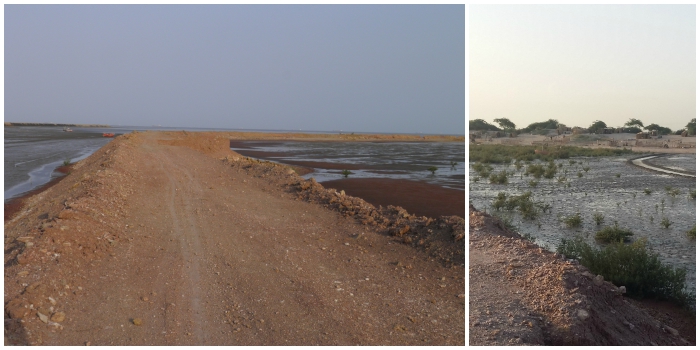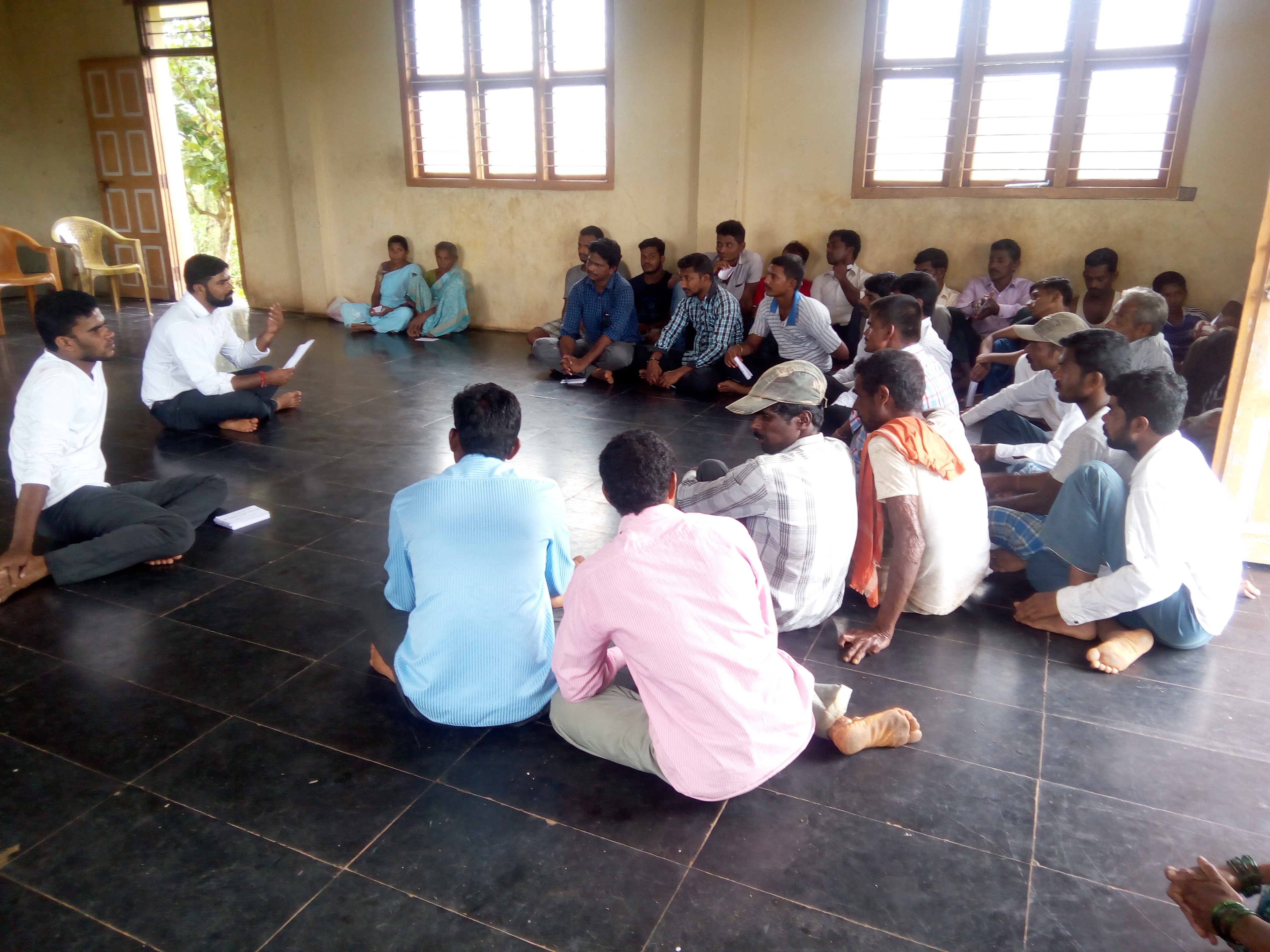 Baad, a village near my village of Kagal in coastal Karnataka, hosts a fair every year at the Shri Kanchika Parameshwari temple. As children, the joy of going to this fair was unparalleled. During the fair, the yakshagana, a folk dance, used to take place in a big field near the temple. Instead of paying to watch this dance, my friends and I used to play a game of dappanduppi with mud stones. These memories remain as fond connections to our childhood.
Baad, a village near my village of Kagal in coastal Karnataka, hosts a fair every year at the Shri Kanchika Parameshwari temple. As children, the joy of going to this fair was unparalleled. During the fair, the yakshagana, a folk dance, used to take place in a big field near the temple. Instead of paying to watch this dance, my friends and I used to play a game of dappanduppi with mud stones. These memories remain as fond connections to our childhood.
In 2008, while I was completing the final year of my BA studies, I came to hear that this field had been sold and that a big resort would come up there. Many questions about why the owners would want to sell such a prosperous field, where farmers would grow rice and peanuts during the monsoons and vegetables during the summer months, plagued me.
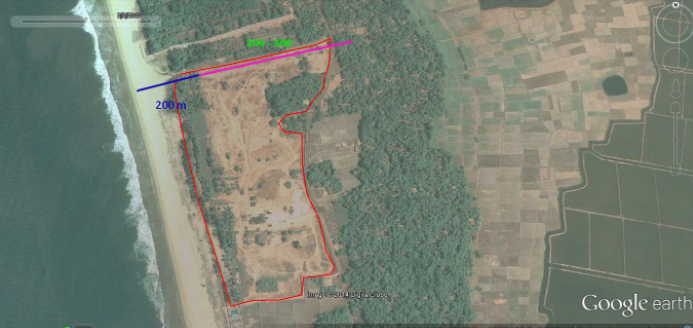
Nayak Hospitalities (“NH”) was the buyer and as a result of the purchase, farmers’ fields, some public wells, and even a cremation yard, was acquired. Public access to a beach was also blocked. The loss of the wells affected the supply of drinking water to three villages – Baad, Jeshtapura, and Gudeangadi. After NH built a wall of about 15 to 20 metres height around the occupied land, fresh breeze from sea stopped blowing into the village. The villagers, who were also worried about the dangers posed by the crumbling of the wall during the rainy season, complained to the panchayat on two occasions and asked for the height of the compound wall to be reduced, but the panchayat did not take any action.
As an Enviro-Legal Coordinator with the Centre for Policy Research (CPR)-Namati Environmental Justice Program, my job is to inform people about the law, and work with them to solve the various environment-related problems they face. I had helped conduct training programmes on awareness of the Coastal Regulation Zone Notification, 2011 (“CRZ Notification”) in Baad and surrounding areas. This led to discussions about the violations caused by NH and a decision to work together in collecting information, evidence, and pursuing remedies with the local authorities. Collection of information is central to the way we try to resolve problems. That way, if a similar problem arose in the district, a solution based on this case could be used.
Collection of information
The project had obtained clearance from the Ministry of Environment, Forests and Climate Change in December, 2010. Under this letter, permission had been granted to construct the resort on survey numbers 4 to 9, 11 to 13, 17, 19 to 21, 23, and 26 of Baad and survey numbers 14, 16, 18, and 19 of Gudeangadi. It also contained 12 specific conditions and 14 general ones but we observed that many of them had not been complied with.
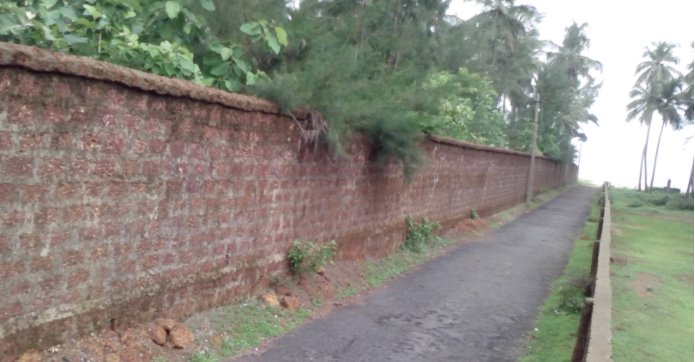
- Construction on land in excess of permission given: The project had permission to construct on 5.26 ha, but ended up constructing on 9.67 ha. The land includes public property such as government wells, a cremation yard, a temple’s field, and also access to the beach.
- Construction in No Development Zone: Under the CRZ Notification, no new construction is allowed in the zone known as CRZ-III. However, the compound wall has been constructed in the 0-200m No Development Zone of CRZ-III.
- Access restricted: The lack of access to the three government wells located on NH’s property is leading to shortage of drinking water for the villagers living in the area.
- Non-permissible installation: The installation of a pumpset in the NDZ of CRZ-III is not a permissible activity. However, pumpsets have been installed on the NH site. This has reduced ground water in the region.
Advocating with authorities
I discussed strategy with the villagers and identified the relevant authorities. A letter was sent to the Regional Director (“RD”) of the Karnataka Coastal Zone Management Authority (KCZMA) office at Karwar. After a site inspection, the RD noted some violations and sent a report to the KCZMA and a notice to the proprietors of NH.
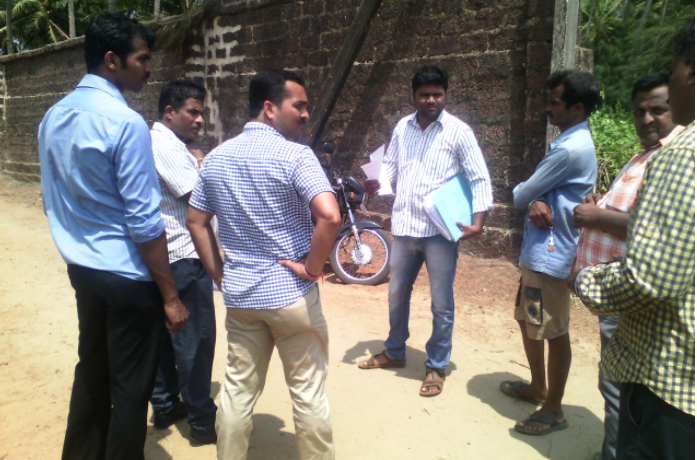
Since no relief followed, the villagers and I decided to send letters to all relevant authorities including the District Commissioner (“DC”), Executive Officer (“EO”), and the Panchayat Development Officer (“PDO”). Site inspections were carried out and once again, notices were issued against NH. Upon request by the villagers, the panchayat on five separate occasions, gave notice to NH to reduce the height of the compound wall. This too had no effect. Finally, an order by the DC led to a reduction of the height of the wall from 15-20 meters to 6 feet. This was a small victory after two years of hard work.
Not a small victory
The victory was not absolute since the villagers still did not have access to the common land and the government wells. We used provisions in the Karnataka Land Reform Act, 1961, Panchayati Raj Act, 1993, and the Environmental Protection Act, 1986 and wrote letters to the DC, the EO, and the PDO. If any action had been taken pursuant to these letters perhaps a solution might have had been possible. The letters get transferred from one government department to another and my job then becomes to trace the status of the compliant. This is a waste of time, money, and energy.
The NH project is still inconvenient for the villagers in Baad and Gudeangadi and though their problems are not yet fully resolved, there is still hope. Through these two years, there has been immense support from the villagers of Baad and Gudeangad in working together to resolve the problems that they face. They now also have a pretty good understanding of the law and are in a position to seek remedies to their problems in the legal system. By working to get justice in this case, the villagers have also become more aware about the importance of the environment and common resources. This manner of legal empowerment has also helped them solve other small CRZ violations.

Vinod Patgar is an Enviro-Legal Co-ordinator with the Centre for Policy Research – Namati Environmental Justice Program.






